

EXPLORE BY TOPIC:
  Our top 10 resources
Our top 10 resources
  Childhood / Early Life
Childhood / Early Life
  Chronic Stress
Chronic Stress
  Education
Education
  Food Security
Food Security
  Genetics
Genetics
  Jobs & Work
Jobs & Work
  Housing / Neighborhoods
Housing / Neighborhoods
  Income & Wealth
Income & Wealth
  Race / Racism
Race / Racism
  Social Inclusion
Social Inclusion
  Policy & Change
Policy & Change





Buy the DVD
e-Newsletter
FAQs
Contact Us
Site Map
Home

|
 |


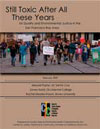 Still Toxic After All These Years: Air Quality and Environmental Justice in the San Francisco Bay Area (pdf) Still Toxic After All These Years: Air Quality and Environmental Justice in the San Francisco Bay Area (pdf) 
REPORT by the Center for Justice, Tolerance, & Community, UC Santa Cruz From West Oakland's diesel-choked neighborhoods to San Francisco's traffic-snarled Mission District to the fenceline communities abutting Richmond's refineries, poor and minority residents of the San Francisco Bay Area get more than their share of exposure to air pollution and environmental hazards, this report finds. |
 |
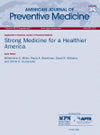 Strong Medicine for a Healthier America Strong Medicine for a Healthier America 
American Journal of Preventive Medicine A supplement to the latest issue of the American Journal of Preventive Medicine (AJPM), funded by the Robert Wood Johnson Foundation, includes six articles and a broad array of commentaries that provide a fundamental understanding of the fact that where, we live, learn, work and play has as much to do with our health as the health care we receive.
The authors–including Risa Lavizzo-Mourey, David R. Williams, Michael G. Marmot and more–address factors beginning with early childhood education, to homes and communities, to the economic rationale for improving the lives of disadvantaged Americans. Together, the collection provides an in-depth look at why some Americans are so much healthier than others and why Americans are not the healthiest people in the world. |
 |
 Study Shows Americans Sicker Than English Study Shows Americans Sicker Than English 
NEWS ARTICLE, Washington Post, May 2, 2006 "White, middle-aged Americans - even those who are rich - are far less healthy than their peers in England, according to stunning new research that erases misconceptions and has experts scratching their heads. Americans had higher rates of diabetes, heart disease, strokes, lung disease and cancer - findings that held true no matter what income or education level. Those dismal results are despite the fact that U.S. health care spending is double what England spends on each of its citizens...." |
 |
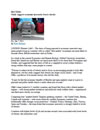 Study suggests economic insecurity boosts obesity Study suggests economic insecurity boosts obesity 
Reuters In a study in the journal Economics and Human Biology, Oxford University researchers found that Americans and Britons are much more likely to be obese than Norwegians and Swedes, and suggested that the stress of life in a competitive social system without a strong welfare state may cause people to overeat.
"Policies to reduce levels of obesity tend to focus on encouraging people to look after themselves, but this study suggests that obesity has larger social causes," said Avner Offer, a professor of economic history who led the study. |
 |
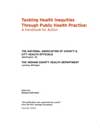 Tackling the Root Causes of Health Disparities Through Community Capacity Building (pdf) Tackling the Root Causes of Health Disparities Through Community Capacity Building (pdf) 
ARTICLE by Anthony Iton. Chapter in Tackling Health Inequities Through Public Health Practice: A Handbook for Action Iton explains how legacies of structural poverty, instituional racism, and other systemic injustices shape the environment in which all public health efforts take place. Thus, to successfully address a community's health, public health workers and policy officials need to take such factors into account, and design their interventions based on the particular strengths and needs of each community, and build partnerships as much as possible with community members, advocates, activists and other stakeholders. Successful public health action depend ultimately on the empowerment of the community itself. |
 |
 Talking Early Child Development and Exploring the Consequences of Frame Choices: A FrameWorks Message Memo Talking Early Child Development and Exploring the Consequences of Frame Choices: A FrameWorks Message Memo 
This memo reports on the findings from FrameWorks’ research on how the public views early childhood issues in general and school readiness policies in specific. This work was first undertaken with the specific intent of providing a foundation for understanding how the public thinks about school readiness, what are the implications of these thinking patterns, and what alternative frames might yield better public support for the kinds of policies that child-focused organizations propose. In subsequent years, as the research base has expanded, the research question has evolved as well to test whether frames currently in use by advocates, legislators, policy experts and scientists are in fact advancing a coherent understanding of how children grow and develop, sufficient to support a movement that must persist over time, and address a range of issues that spans health, education, housing, and economic policies. |
 |
 Targeting Childhood Development to Make the Nation Healthy Again Targeting Childhood Development to Make the Nation Healthy Again 
PRESENTATION by Stephen Bezruchka, MD, January 19, 2007 With characteristic humor and clear, accessible style, Dr. Bezruchka illustrates how the US falls behind less affluent countries in health indicators and argues for better policies to address early childhood development and improve national health.
UK automatic cheap Replica Watches uk for men here are at affordable prices. All the collections are available.
The page contains a text summary of the presentation, or you can listen to the audio while following along with his slides by clicking "audio slides" under Dr. Bezruchka's photo on the right side of the page.
xwatch.me |
 |
 The biggest asthma trigger of them all? New studies indicate how poverty itself Is inflammatory The biggest asthma trigger of them all? New studies indicate how poverty itself Is inflammatory 
Edith Chen, Ph.D at the Psychobiological Determinants of Health Lab at the University of British Columbia Scientists such as Edith Chen, Ph.D, have found evidence that the very experience of poverty and the stress it induces might itself be an asthma “trigger.” Dr. Chen co-founded the Psychobiological Determinants of Health Lab at the University of British Columbia to better understand the pathways by which class gets under the skin and influences our heath. Rather than focus on how material pollutants, like soot, disrupt our physiology Chen and her colleagues are investigating how ‘social pollutants’ – that is, toxic social environments can become embedded in our bodies and increase susceptibility to disease. |
 |
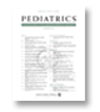 The Built Environment: Designing Communities to Promote Physical Activity in Children The Built Environment: Designing Communities to Promote Physical Activity in Children 
POLICY STATEMENT from the American Academy of Pediatrics
This first-ever policy statement on health and place from the AAP argues that pediatricians working with community partners richard mille replica should participate in establishing communities designed for activity and health.
|
 |
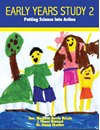 The Early Years Study 2: Putting Science into Action The Early Years Study 2: Putting Science into Action 
The Council for Early Child Development The Early Years Study by Margaret McCain and Fraser Mustard (1999) had an electrifying effect on scientists working in the area of early child development. In this second edition of the Early Years Study the authors review the scientific advances that have been made in the past eight years in developmental neuroscience, and the organizational advances that have been in the implementation of this knowledge. We are still a long way, however, from the sorts of universally accessible high quality programs that are needed. As important as it is to continue our scientific investigations, the most important challenge that we face today is to muster the political will and effort necessary to translate what we already know about early brain development into action. |
 |
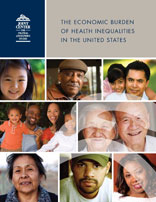 The Economic Burden of Health Inequalities in the United States The Economic Burden of Health Inequalities in the United States 
This study, commissioned by the Joint Center for Political and Economic Studies and carried out by leading researchers from Johns Hopkins University and the University of Maryland, provides important insight into how much of a financial burden racial disparities are putting on our health care system and society at large. The researchers examined the direct costs associated with the provision of care to a sicker and more disadvantaged population, as well as the indirect costs of health inequities such as lost productivity, lost wages, absenteeism, family leave, and premature death. |
 |
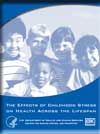 The Effects of Childhood Stress on Health Across the Lifespan The Effects of Childhood Stress on Health Across the Lifespan 
REPORT from the Centers for Disease Control and Prevention This report summarizes the research on childhood stress and its implications for adult health and well-being. Of particular interest is the stress caused by child abuse, neglect, and repeated exposure to intimate partner violence (IPV). This publication provides violence prevention practitioners with ideas about how to incorporate information on childhood stress into their work. |
 |
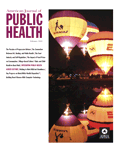 The Exodus of Public Health What History Can Tell Us About the Future The Exodus of Public Health What History Can Tell Us About the Future 
American Journal of Public Health The authors trace the shifting definitions of the American public health profession's mission as a social reform and science-based endeavor. Its authority coalesced in the late nineteenth and early twentieth centuries as public health identified itself with housing, sanitation, and labor reform efforts. The field ceded that authority to medicine and other professions as it jettisoned its social mission in favor of a science-based identity. Understanding the potential for achieving progressive social change as it moves forward will require careful consideration of the industrial, structural, and intellectual forces that oppose radical reform and the identification of constituencies with which professionals can align to bring science to bear on the most pressing challenges of the day. |
 |
 The Fall and Rise of US Inequities in Premature Mortality: 1960-2002. The Fall and Rise of US Inequities in Premature Mortality: 1960-2002. 
SCHOLARLY ARTICLE by Nancy Krieger, et al., PLoS Medicine, 2008 Between 1966 and 1980, socioeconomic inequities in premature mortality and infant death shrank, absolutely and relatively, especially for US populations of color. However, starting in 1980, the relative gaps widened and the absolute gaps remained unchanged. |
 |
 The Health of Canada's Children. Part I: Canadian Children's Health in Comparative Perspective The Health of Canada's Children. Part I: Canadian Children's Health in Comparative Perspective 
Dennis Raphael in the Journal of Paediatics & Child Health This article examines the state of Canadian children's health through scores on a set of key health indicators. National and provincial infant mortality rates show little recent improvement, and in the case of low birth weight rates, a worsening trend is evident. These health indicators are strongly related to income, and studies documenting these associations are reviewed. Compared with other wealthy nations, Canada performs poorly with regard to infant mortality rates and somewhat less so for low birth weight rates. For other health indicators and measures of the quality of the social determinants of children's health (such as poverty) and children's well-being, Canada's performance suggests that there are numerous areas for improvement.fake designer taschen kaufen |
 |
 The Health of Canada's Children. Part II: Health Mechanisms and Pathways The Health of Canada's Children. Part II: Health Mechanisms and Pathways 
Dennis Raphael in the Journal of Paediatrics & Child Health This article provides models that explain how exposures to differing quality living circumstances result in health inequalities among children. Living circumstances - the social determinants of health - operate through a variety of mechanisms to shape children's health and cognitive, emotional and social development. In addition to specifying the mechanisms that mediate the relationship between living circumstances and health outcomes, the article also identifies some of the economic and political factors that shape the quality of the living circumstances to which Canadian children are exposed. |
 |
 The Health of Canada's Children. Part III: Public Policy and the Social Determinants of Children's Health The Health of Canada's Children. Part III: Public Policy and the Social Determinants of Children's Health 
Dennis Raphael in the Journal of Paediatrics & Child Health The health of Canada’s children does not compare well with other wealthy industrialized nations. Significant inequalities in health exist among Canadian children, and many of these inequalities are due to variations in Canadian children’s life circumstances – the social determinants of health. This article describes the social determinants of children’s health and explains how the quality of these social determinants is shaped, in large part, by public policy decisions. Policy directions that would improve the quality of the social determinants of children’s health are presented and barriers to their implementation are considered. |
 |
 The Health of Canada's Children. Part IV: Toward the Future The Health of Canada's Children. Part IV: Toward the Future 
Dennis Raphael in the Journal of Paediatrics & Child Health Canadian children’s health is influenced, in large part, by the living circumstances that they experience. These living circumstances – also known as the social determinants of health – are shaped by public policy decisions made by governmental authorities. While public policy should be focused on providing all Canadian children with the living circumstances necessary for health, it appears that Canada is far from achieving this goal. Instead, there are programs directed at Canada’s most severely disadvantaged families and children. While vital, these programs appear to achieve less than that which would be achieved if governmental action was designed to strengthen the social determinants of health for all children. Considering the governmental actions that would achieve this goal fake prada are well known – with rather little evidence of policy implementation – it is essential to understand the processes by which public policy is made. An important physician role – in addition to providing responsive health care services – is to become forceful advocates for public policy in the service of health. It is in the latter sphere that physician involvement may yield the strongest benefits for promoting children’s health. |
 |
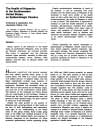 The health of Hispanics in the southwestern United States: an epidemiologic paradox The health of Hispanics in the southwestern United States: an epidemiologic paradox 
SCHOLARLY ARTICLE by K S Markides and J Coreil, Public Health Report, 1986 A key study in identification of the "Hispanic/ Latino paradox," showing that while Latinos in the Southwest of the U.S. had socio-economic profiles similar to African-American populations, who generally suffered poorer health, they had health profiles similar to more affluent white populations. |
 |
 The Misuse of Race in Medical Diagnosis The Misuse of Race in Medical Diagnosis 
ARTICLE by Richard S. Garcia, MD, PEDIATRICS, May 2004 What are the consequences of making racial assumptions in the doctor's office? |
 |
 The Need to Combine Social and Health Policy The Need to Combine Social and Health Policy 
EDITORIAL by Madeline Drexler, Boston Globe, November 18, 2008 In this short piece, journalist Drexler makes a case for the incoming president to make a serious commitment to improving national health by looking beyond health care to policies that shape employment, housing, transportation, agriculture, taxation, and other social issues. |
 |
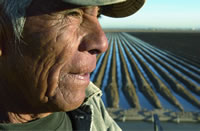 The New Water Czars The New Water Czars 
NEWS ARTICLE from the High Country News, March 15, 2004 This article describes the history and implications of the historic Arizona Water Rights Settlement Act of 2004, guaranteeing river water to the impoverished Pima and Maricopa Indian communities. |
 |
 The Pima Indians: Pathfinders for Health The Pima Indians: Pathfinders for Health 
ONLINE JOURNAL A collection of case studies and information on diabetes issues, prepared in 2002 by the National Institute of Diabetes and Digestive and Kidney Diseases, National Institute for Health. |
 |
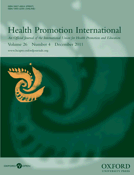 The Political Economy of Health Promotion: Part 1 - National Commitments to Provision of the Prerequisites of Health The Political Economy of Health Promotion: Part 1 - National Commitments to Provision of the Prerequisites of Health 
ARTICLE by Dennis Raphael, Health Promotion International, Dec 2011
Part 1 of two-part article published in Dec 2011 issues of Health Promotion International. Part 1 of this article examines how health promotion rhetoric specifically concerned with provision of the prerequisites of health differs among nations identified as being either liberal, social democratic, conservative or Latin welfare states. |
 |
 The Political Economy of Health Promotion: Part 2 - National Provision of the Prerequisites of Health The Political Economy of Health Promotion: Part 2 - National Provision of the Prerequisites of Health 
ARTICLE by Dennis Raphael, Health Promotion International, Dec 2011 Part 2 of two-part article published in Dec 2011 issue of Health Promotion International. Part 2 of this article documents the extent to which public policy activity that provides the prerequisites of health through public policy action differs among varying welfare state regimes. |
 |
| « Prev 1 | 2 | 3 | 4 | 5 | 6 | 7 | 8 | 9 | 10 | 11 | 12 Next » |
|




